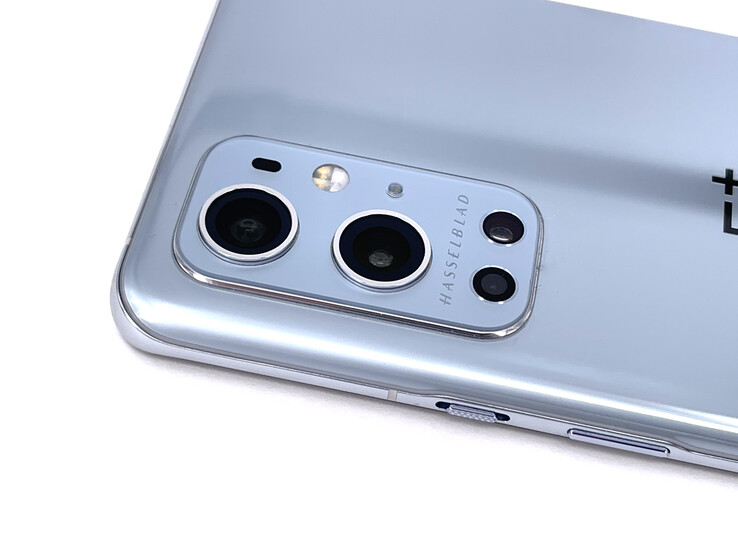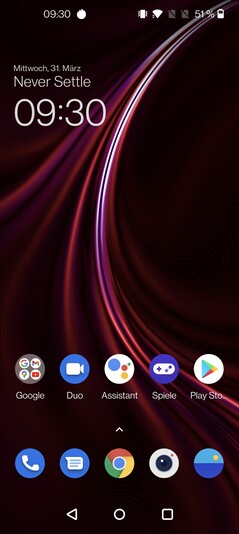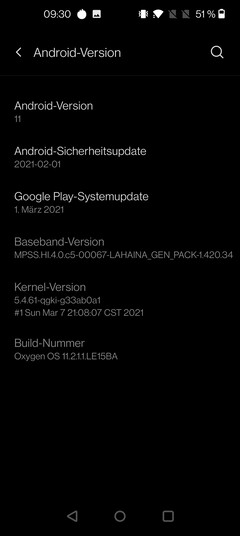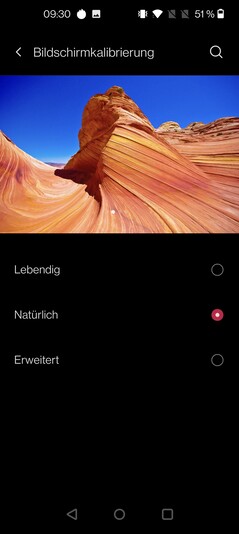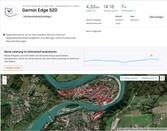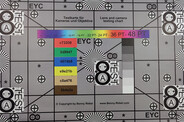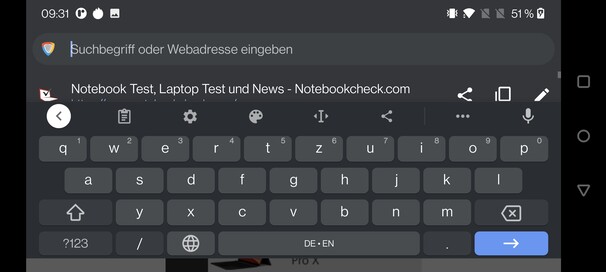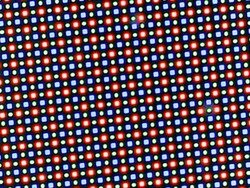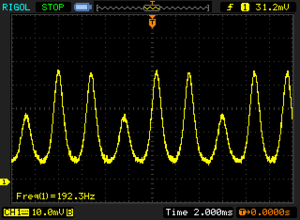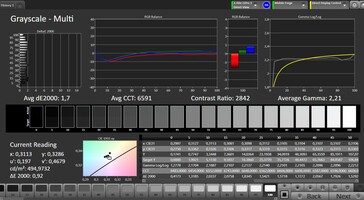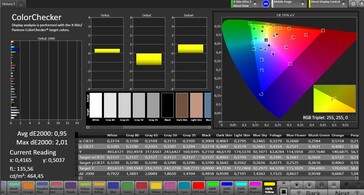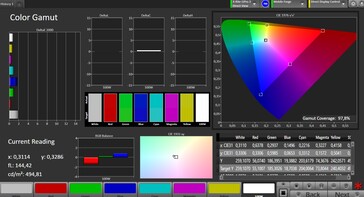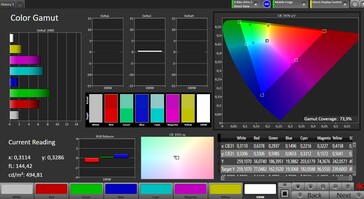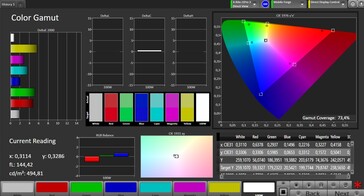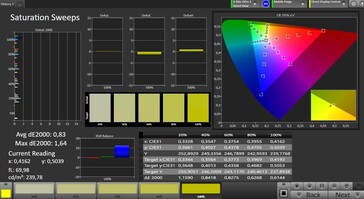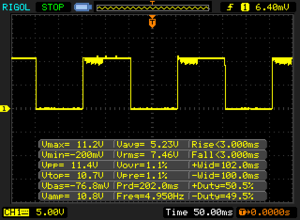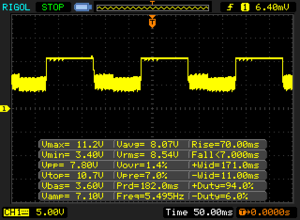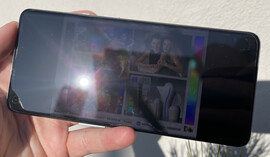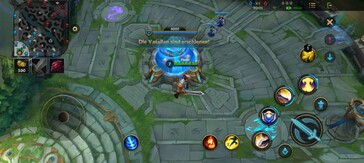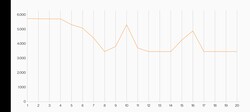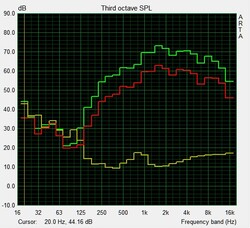OnePlus 9 Pro smartphone review: High-end phone charges twice as fast

There are two new high-end smartphones again this year from the Chinese manufacturer OnePlus. Naturally, we are reviewing the OnePlus 9 separately, and we will focus on the OnePlus 9 Pro here.
You have to pay at least 899 Euros (~$1,056) for the 9 Pro. In return, you get four camera lenses that were optimized in cooperation with cult manufacturer Hasselblad and a high-resolution display with 10-bit color depth that is supposed to consume less battery at high refresh rates. Most importantly, the OnePlus 9 Pro now charges even faster wirelessly.
That all sounds exciting, but does it justify a premium of 200 Euros (~$235) compared to the OnePlus 9 with the same amount of storage? And can the OnePlus 9 Pro even keep up with other high-end devices? Let's find out in this review.
Possible contenders in comparison
Rating | Date | Model | Weight | Drive | Size | Resolution | Price |
|---|---|---|---|---|---|---|---|
| 88.6 % v7 (old) | 06 / 2022 | OnePlus 9 Pro SD 888 5G, Adreno 660 | 197 g | 256 GB UFS 3.1 Flash | 6.70" | 3216x1440 | |
| 89.8 % v7 (old) | 11 / 2020 | Apple iPhone 12 Pro A14, A14 Bionic GPU | 189 g | 256 GB NVMe | 6.10" | 2532x1170 | |
| 89.6 % v7 (old) | 02 / 2021 | Samsung Galaxy S21+ Exynos 2100 5G, Mali-G78 MP14 | 200 g | 128 GB UFS 3.1 Flash | 6.70" | 2400x1080 | |
| 88.5 % v7 (old) | 04 / 2020 | OnePlus 8 Pro SD 865, Adreno 650 | 199 g | 256 GB UFS 3.0 Flash | 6.78" | 3168x1440 | |
| 87.3 % v7 (old) | 02 / 2021 | Xiaomi Mi 11 SD 888 5G, Adreno 660 | 196 g | 128 GB UFS 3.1 Flash | 6.81" | 3200x1440 |
Case – Three colors, three surfaces
Matte or glossy? This question is not easy to answer when it comes to the back of the OnePlus 9 Pro. The manufacturer offers three different colors, all of which have different surfaces. Our review sample comes in Morning Mist, which ranges from silver-gray to white and offers the glossiest surface. Pine Green is a dark green with a matte finish that also reduces fingerprints. Stellar Black is the black variant that is a bit roughened and reminds us of a slightly softer version of the Sandstone surface of earlier OnePlus devices.
In contrast to the OnePlus 9, the OnePlus 9 Pro once again comes with a 2.5D glass that curves over the edges. In the OnePlus 8 Pro, accidental touchscreen touches could be triggered at these edges from time to time, but we have the impression that the manufacturer has gotten a good grip on this issue. The lateral view has hardly changed compared with the predecessor, and the dimensions and weight of the two smartphones only differ marginally.
The workmanship is clean and high-quality, and the smartphone sits well in the hand. The OnePlus 9 Pro is again certified according to the IP68 standard; therefore, it is protected from damage caused by dust and water. However, OnePlus explicitly excludes warranty claims due to water damage.
Connectivity – OnePlus 9 Pro with generous storage
You can choose between 128 GB and 256 GB of mass storage, where fast UFS 3.1 memory is used. RAM is also ample at 8 GB or 12 GB. Since this is fast LPDDR5, the speed is also good.
128 GB of data storage and 8 GB of RAM are available for 899 Euros (~$1,056). The OnePlus 9 Pro is available for 999 Euros (~$1,174) with 256 GB of data storage and 12 GB of RAM.
Storage expansion via microSD is not provided, but the user can use two SIMs. However, actual SIM cards are needed here; eSIMs are still not supported.
Software – Phone with Android 11
OnePlus's proprietary interface OxgenOS 11 is based on Android 11, and the security patches were up to date at the time of writing.
Fortunately, there's no third-party software on the smartphone besides the Netflix app, and OnePlus only installs its own Community app and the OnePlus Switch app, which can copy user data from one smartphone to another. Both apps can be uninstalled without problems. Fans of clean systems will be happy.
Streaming content can also be viewed in HD without issues, since the device is certified according to Widevine DRM L1.
Communication and GPS – 5G smartphone with LTE diversity
5G and fast LTE with 4x4 MIMO and up to 2 Gb/s for downloads are on board. The diversity of LTE networks is also appropriate for a high-end device and should cover just about all countries in the world.
Of course, Wi-Fi 6 is just as much of an honor as 2x2 MIMO. As a result, the OnePlus 9 Pro achieves similarly fast speeds as other high-end smartphones with our reference router, the Netgear Nighthawk AX12. However, a few Mb/s are missing, so our review sample only reaches the lower ranks at a high level.
| Networking | |
| iperf3 transmit AX12 | |
| OnePlus 8 Pro | |
| Samsung Galaxy S21+ | |
| Samsung Galaxy S21+ | |
| Apple iPhone 12 Pro | |
| OnePlus 9 Pro | |
| Xiaomi Mi 11 | |
| iperf3 receive AX12 | |
| Samsung Galaxy S21+ | |
| Samsung Galaxy S21+ | |
| Xiaomi Mi 11 | |
| OnePlus 8 Pro | |
| OnePlus 9 Pro | |
| Apple iPhone 12 Pro | |
Inside buildings, the smartphone can only connect to satellite networks when it's close to windows. If you go outdoors, however, the location is available very quickly, and it's also very accurate at three meters. All important networks are supported, including Galileo, GPS, and GLONASS.
Needless to say, we also go on a test drive to determine the navigation accuracy under real-world conditions. However, this time we did so by car due to a late onset of winter. The OnePlus 9 Pro meets our expectations very well here. Even the side of the road we are driving on can be identified in the navigation log, and there are only a few inaccuracies. Therefore, the OnePlus 9 Pro is suitable even if you want to navigate with high accuracy.
Telephone and call quality – Good voice reproduction
The phone app comes from Google and has only been slightly modified in Android 11. There are still three tabs for favorites, contacts, and recent calls. A search bar at the top helps find numbers and contacts quickly. VoLTE and VoWiFi are supported as long as the network provider also offers these.
The earpiece can get quite loud and offers good voice quality without noise or distortions. The microphone, however, doesn't handle loud voices well and transmits ours with an audible drone when we speak very forcefully. On the other hand, it copes better with quiet voices. This doesn't apply to the hands-free mode: You have to maintain a certain voice level here or you won't be heard. However, the person on the other end sounds very clear here as well.
Cameras – Hasselblad modifies the app
OnePlus always puts a lot of emphasis on the cameras of its smartphones in its marketing, but it hasn't quite reached the top yet. The leading phones from Huawei and Apple are still there. But OnePlus has now found some help: The team of the Swedish camera brand Hasselblad is assisting in optimizing photographs. Initially, the focus is on the looks and the software, but a cooperation in terms of hardware is also planned for the future.
The OnePlus 9 Pro's camera software alone reveals that something has changed: The shutter button is now in Hasselblad orange, and the shutter sound is that of a real Hasselblad camera. In addition, color calibration has been adjusted in such a way that the OnePlus 9 Pro is supposed to reproduce colors more accurately now. The Pro mode has also been revised with the help of Hasselblad. 12-bit RAW pictures are now supported. A new mode is Tilt Shift, which we will take a closer look at in a separate article.
As in the OnePlus 8 Pro, the main camera has a resolution of 48 megapixels, but the sensor is a generation newer with Sony's IMX 789. The full resolution can be used if you wish, but usually 12-megapixel pictures are taken, which means that four pixels are combined into one, increasing the light yield. Something else we noticed: The OnePlus 9 Pro occasionally has the problem that the main camera produces an ugly pixel mess when capturing faces that are further away. Overall, the image quality of the main camera is at a high level, but once again, it's not enough for a top spot: The iPhone 12 Pro Max, for example, is simply even more accurate when it comes to details, and it reproduces even more nuances; the sunset with the evening sky also looks more appealing overall.
Image comparison
Choose a scene and navigate within the first image. One click changes the position on touchscreens. One click on the zoomed-in image opens the original in a new window. The first image shows the scaled photograph of the test device.
Main lens flowerMain lens surroundingsMain lens low lightWide-angle lensThe main camera shows sharp pictures and decent contrast in the lab under good exposure, but areas look a bit irregular. At 1 lux, something is still visible in the picture, but the image looks even significantly darker than with the predecessor.
The wide-angle camera already had a very high resolution in the OnePlus 8 Pro, and a few more pixels have been added at 50 megapixels. However, pictures with 1/4 of the resolution are taken by default here as well. Overall, the pictures look quite sharp, but the reproduction could be even better if you look closer. The iPhone 12 Pro Max also wins in terms of details here.
Videos can be recorded in 8K resolution if desired, but only at 30 fps in that case. At 4K, even 120 fps is possible, but only for a maximum of five minutes. It's nice that you can use color filters for videos; in this way, you can also record black-and-white videos, for example, as well as videos in the 21:9 cinema format. The autofocus reacts quickly, and the exposure is controlled in a fine-tuned manner.
Surely, OnePlus can still improve the camera quality via software updates, but it currently remains at the status of the previous years: A very good camera system that can't quite keep up with the very best ones.
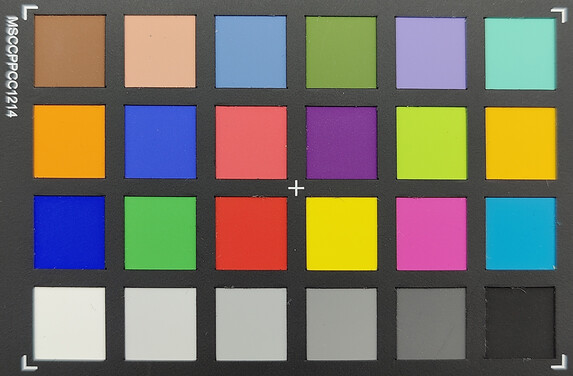

Accessories and warranty – Generous amount of accessories
Besides a USB cable and the SIM tool, a silicon bumper case is also found in the box. The included charger supports Warp Charge 65T but also USB Power Delivery, which allows it to supply other devices with up to 45 watts.
Together with the OnePlus 9 Pro, OnePlus also introduced a new wireless charger that can charge the smartphone's two battery cells simultaneously so that it reaches a maximum charging power of 50 watts. The charger, on which the smartphone can be placed upright or horizontally, costs just under 70 Euros (~$82). Cases like the OnePlus classics with a sandstone surface or made of carbon cost between 25 (~$29) and 40 (~$47) Euros.
OnePlus offers a 24-month warranty on the smartphones; a warranty claim can be filed online, and the phone can be sent in afterwards. It's nice that you can see the prices for the replacement parts online on OnePlus's website and, therefore, roughly calculate how much it will cost when the warranty doesn't apply.
Input devices and handling – Precise touchscreen in the OnePlus phone
The OnePlus 9 Pro scans the display 360 times per second for touches if required. The feature can be turned on and off but only at a refresh rate of 120 Hz; it's not available at 60 Hz. The feature is usually not enabled in the settings menus. However, for professional gamers, for whom every millisecond counts, the faster sampling rate is available in the most played mobile games and could definitely make a difference there.
On the right side of the case is the alert slider, which can be used to set whether you want to be notified via ringtone, vibration, or not at all for the moment. Like all the buttons on the case, it feels high-quality, is easy to grasp, and offers very clear functionality.
The fingerprint sensor is hidden behind the display and sits quite close to the lower edge of the screen. We found that the placement on the OnePlus 8 Pro, which was a bit further away from the edge, was a bit more intuitive, but if you register the fingerprint properly, you also get a very reliable unlock option in the 9 Pro - especially since the fingerprint sensor feels a bit faster than in the predecessor. Face recognition can also be used to unlock the smartphone. The 9 Pro uses the front-facing camera and a software solution that works quite reliably.
Display – Power-saving 120 Hz display
OnePlus installs again an AMOLED display with a 1440p resolution, but you can also reduce it to 1080p in the settings menu to save energy. Speaking of which: OnePlus uses a display with LTPO technology this time, which can reduce energy consumption by dynamically adjusting the refresh rate to the content on the display. If you look at a picture, the display is only refreshed once per second, but if you scroll, the full 120 Hz is available.
HDR10+ is supported as well as a color depth of 10 bits. The manufacturer specifies a maximum brightness of 1,300 cd/m². Needless to say, we measured the brightness very accurately in our tests with the spectrophotometer and the CalMAN software. As a matter of fact, we aren't even able to reach these values on very small surfaces like in the APL10 test, despite the front and back of the device being fully illuminated (OnePlus also measures the brightness at the back now, according to its own information). We even measure a slightly lower brightness than in the OnePlus 8 Pro predecessor. Overall, the brightness is good, but other premium smartphones offer a bit more.
| |||||||||||||||||||||||||
Brightness Distribution: 97 %
Center on Battery: 733 cd/m²
Contrast: ∞:1 (Black: 0 cd/m²)
ΔE ColorChecker Calman: 0.95 | ∀{0.5-29.43 Ø4.78}
ΔE Greyscale Calman: 1.7 | ∀{0.09-98 Ø5}
97.8% sRGB (Calman 2D)
Gamma: 2.21
CCT: 6591 K
| OnePlus 9 Pro AMOLED, 3216x1440, 6.7" | Apple iPhone 12 Pro OLED, 2532x1170, 6.1" | Samsung Galaxy S21+ Dynamic AMOLED 2X, 2400x1080, 6.7" | OnePlus 8 Pro AMOLED, 3168x1440, 6.8" | Xiaomi Mi 11 LED DotDisplay, 3200x1440, 6.8" | |
|---|---|---|---|---|---|
| Screen | -14% | -25% | 16% | -8% | |
| Brightness middle (cd/m²) | 733 | 822 12% | 814 11% | 796 9% | 840 15% |
| Brightness (cd/m²) | 746 | 820 10% | 814 9% | 779 4% | 845 13% |
| Brightness Distribution (%) | 97 | 99 2% | 97 0% | 94 -3% | 98 1% |
| Black Level * (cd/m²) | |||||
| Colorchecker dE 2000 * | 0.95 | 1.2 -26% | 2 -111% | 0.68 28% | 1.2 -26% |
| Colorchecker dE 2000 max. * | 2.01 | 3.5 -74% | 3.6 -79% | 1.55 23% | 2.7 -34% |
| Greyscale dE 2000 * | 1.7 | 1.8 -6% | 1.4 18% | 1.1 35% | 2 -18% |
| Gamma | 2.21 100% | 2.18 101% | 2.12 104% | 2.237 98% | 2.26 97% |
| CCT | 6591 99% | 6337 103% | 6568 99% | 6310 103% | 6492 100% |
* ... smaller is better
Screen Flickering / PWM (Pulse-Width Modulation)
| Screen flickering / PWM detected | 192.3 Hz | ||
The display backlight flickers at 192.3 Hz (worst case, e.g., utilizing PWM) . The frequency of 192.3 Hz is relatively low, so sensitive users will likely notice flickering and experience eyestrain at the stated brightness setting and below. In comparison: 53 % of all tested devices do not use PWM to dim the display. If PWM was detected, an average of 8111 (minimum: 5 - maximum: 343500) Hz was measured. | |||
The OLED screen can display absolute blacks, so that the contrast is theoretically infinitely high. Color accuracy is also at a very high level, but it's slightly below that of the OnePlus 9, for example. The differences will probably not be visible to the naked eye, but those who want or need the absolutely most color-accurate display will be better served by the OnePlus 8 Pro or the OnePlus 9.
As usual for OLED displays, we measure PWM flickering in the range of 200 Hz up to a display brightness of 99%. The DC-dimming mode, which was an experimental feature in the predecessor, is unfortunately no longer found in the OnePlus 9 Pro. The response times from black to white are at the usual level, but they are much longer for different shades of gray. This might be due to the new LTPO technology, since we noticed significantly faster response times in the OnePlus 9.
Display Response Times
| ↔ Response Time Black to White | ||
|---|---|---|
| 6 ms ... rise ↗ and fall ↘ combined | ↗ 3 ms rise | |
| ↘ 3 ms fall | ||
| The screen shows very fast response rates in our tests and should be very well suited for fast-paced gaming. In comparison, all tested devices range from 0.1 (minimum) to 240 (maximum) ms. » 17 % of all devices are better. This means that the measured response time is better than the average of all tested devices (20.2 ms). | ||
| ↔ Response Time 50% Grey to 80% Grey | ||
| 77 ms ... rise ↗ and fall ↘ combined | ↗ 70 ms rise | |
| ↘ 7 ms fall | ||
| The screen shows slow response rates in our tests and will be unsatisfactory for gamers. In comparison, all tested devices range from 0.165 (minimum) to 636 (maximum) ms. » 99 % of all devices are better. This means that the measured response time is worse than the average of all tested devices (31.6 ms). | ||
Performance – Latest high-end SoC
With the Snapdragon 888, OnePlus uses Qualcomm's fastest SoC at the moment. Three different cores come into play here: A very fast Prime Core at 2.84 GHz, three fast cores at up to 2.42 GHz, and four slower cores at up to 1.8 GHz for energy-saving work at lower requirements.
Compared with the OnePlus 8 Pro, the device has become faster, but you will only notice the difference in everyday use in extremely demanding apps. In any case, the OnePlus 9 Pro is a very fast smartphone that can easily keep up with the fastest Android devices currently available.
An Adreno 660 is installed in the SoC as the graphics solution, and it offers a lot of performance as well.
| PCMark for Android | |
| Work performance score (sort by value) | |
| OnePlus 9 Pro | |
| Samsung Galaxy S21+ | |
| OnePlus 8 Pro | |
| Xiaomi Mi 11 | |
| Average Qualcomm Snapdragon 888 5G (11823 - 18942, n=7) | |
| Work 2.0 performance score (sort by value) | |
| OnePlus 9 Pro | |
| Samsung Galaxy S21+ | |
| OnePlus 8 Pro | |
| Xiaomi Mi 11 | |
| Average Qualcomm Snapdragon 888 5G (10231 - 15027, n=10) | |
| GFXBench 3.1 | |
| on screen Manhattan ES 3.1 Onscreen (sort by value) | |
| OnePlus 9 Pro | |
| Apple iPhone 12 Pro | |
| Samsung Galaxy S21+ | |
| OnePlus 8 Pro | |
| Xiaomi Mi 11 | |
| Average Qualcomm Snapdragon 888 5G (36 - 105, n=20) | |
| Average of class Smartphone (11 - 166, n=158, last 2 years) | |
| 1920x1080 Manhattan ES 3.1 Offscreen (sort by value) | |
| OnePlus 9 Pro | |
| Apple iPhone 12 Pro | |
| Samsung Galaxy S21+ | |
| OnePlus 8 Pro | |
| Xiaomi Mi 11 | |
| Average Qualcomm Snapdragon 888 5G (69 - 126, n=20) | |
| Average of class Smartphone (8.4 - 413, n=158, last 2 years) | |
| AnTuTu v8 - Total Score (sort by value) | |
| OnePlus 9 Pro | |
| Apple iPhone 12 Pro | |
| Samsung Galaxy S21+ | |
| OnePlus 8 Pro | |
| Xiaomi Mi 11 | |
| Average Qualcomm Snapdragon 888 5G (569595 - 740847, n=12) | |
The OnePlus 9 Pro performs at a high level in our browser benchmarks, but this is not entirely sufficient for a top ranking. Scrolling through websites is very swift and smooth thanks to the display's 120 Hz technology. Images are already displayed while scrolling. Websites load quickly, and browsing is quite pleasant with OnePlus's latest smartphone as a result.
| Jetstream 2 - 2.0 Total Score | |
| Apple iPhone 12 Pro (Safari Mobile 14) | |
| Average of class Smartphone (23.8 - 387, n=154, last 2 years) | |
| Average Qualcomm Snapdragon 888 5G (61.3 - 125.1, n=13) | |
| Xiaomi Mi 11 (Chrome 88) | |
| Samsung Galaxy S21+ (Chrome 88.0.4324.152) | |
| OnePlus 8 Pro (Chrome 80) | |
| OnePlus 9 Pro (Microsoft Edge 46) | |
| JetStream 1.1 - Total Score | |
| Apple iPhone 12 Pro (Safari Mobile 14) | |
| Average Qualcomm Snapdragon 888 5G (77 - 223, n=19) | |
| Xiaomi Mi 11 (Chrome 88) | |
| OnePlus 9 Pro (Microsoft Edge 46) | |
| Samsung Galaxy S21+ (Chrome 88.0.4324.152) | |
| OnePlus 8 Pro (Chrome 80) | |
| Speedometer 2.0 - Result 2.0 | |
| Average of class Smartphone (15.2 - 643, n=128, last 2 years) | |
| Apple iPhone 12 Pro (Safari Mobile 14) | |
| Samsung Galaxy S21+ (Chrome 88.0.4324.152) | |
| Average Qualcomm Snapdragon 888 5G (46.9 - 121, n=12) | |
| OnePlus 8 Pro (Chome 80) | |
| Xiaomi Mi 11 (Chrome 88) | |
| OnePlus 9 Pro (Microsoft Edge 46) | |
| WebXPRT 3 - Overall | |
| Apple iPhone 12 Pro (Safari Mobile 14) | |
| Average of class Smartphone (38 - 380, n=35, last 2 years) | |
| Average Qualcomm Snapdragon 888 5G (103 - 182, n=18) | |
| Xiaomi Mi 11 (Chrome 88) | |
| OnePlus 8 Pro (Chrome 80) | |
| OnePlus 9 Pro (Microsoft Edge 4689) | |
| Samsung Galaxy S21+ (Chrome 88.0.4324.152) | |
| Octane V2 - Total Score | |
| Apple iPhone 12 Pro (Safari Mobile 14) | |
| Average of class Smartphone (2228 - 121337, n=201, last 2 years) | |
| Average Qualcomm Snapdragon 888 5G (23491 - 47543, n=20) | |
| Samsung Galaxy S21+ (Chrome 88.0.4324.152) | |
| Xiaomi Mi 11 (Chrome 88) | |
| OnePlus 9 Pro (Microsoft Edge 46) | |
| OnePlus 8 Pro (Chrome 80) | |
| Mozilla Kraken 1.1 - Total | |
| OnePlus 8 Pro (Chrome 80) | |
| OnePlus 9 Pro (Microsoft Edge 46) | |
| Samsung Galaxy S21+ (Chrome 88.0.4324.152) | |
| Xiaomi Mi 11 (Chrome 88) | |
| Average Qualcomm Snapdragon 888 5G (891 - 1841, n=20) | |
| Average of class Smartphone (257 - 28190, n=156, last 2 years) | |
| Apple iPhone 12 Pro (Safari Mobile 14) | |
* ... smaller is better
The fast UFS 3.1 storage proves to be very swift in sequential reading in particular, and it has improved in all categories compared to the OnePlus 8 Pro.
| OnePlus 9 Pro | Samsung Galaxy S21+ | OnePlus 8 Pro | Xiaomi Mi 11 | Average 256 GB UFS 3.1 Flash | Average of class Smartphone | |
|---|---|---|---|---|---|---|
| AndroBench 3-5 | 12% | -16% | 0% | 20% | 49% | |
| Sequential Read 256KB (MB/s) | 1995 | 1623 -19% | 1627 -18% | 1615 -19% | 1757 ? -12% | 2223 ? 11% |
| Sequential Write 256KB (MB/s) | 769 | 1037 35% | 730 -5% | 754 -2% | 1204 ? 57% | 1838 ? 139% |
| Random Read 4KB (MB/s) | 258.7 | 309.6 20% | 208.3 -19% | 278.5 8% | 287 ? 11% | 295 ? 14% |
| Random Write 4KB (MB/s) | 254.3 | 283.3 11% | 197.7 -22% | 289.3 14% | 318 ? 25% | 335 ? 32% |
Games – Smooth gaming, but no 120 fps
OnePlus supports the mobile gaming community with a special game mode and HyperTouch, which can increase the touchscreen's response speed by a few frames thanks to an even faster touch sampling rate. However, the 120 fps in games, which the display is capable of rendering, is still something of a problem: Due to the higher battery consumption, OnePlus only allows an increased frame rate (90 fps) in Fortnite so far; all other games have to make do with 60 fps.
We test the frame rates with GameBench's software suite in games like PUBG Mobile and LoL: Wild Rift; we get a fairly constant 60 fps even at maximum settings. The controls are indeed very smooth, and PUBG Mobile's HDR mode can also be activated for an even sleeker look. This makes the OnePlus 9 Pro very suitable for gaming, but you shouldn't count on increased frame rates beyond 60 Hz.
Emissions – Noticeable throttling
Temperature
The OnePlus 9 Pro behaves quite similarly to other smartphones in this price range in terms of case temperatures: A maximum case temperature of 42 °C (~108 °F) is not an issue initially; it could only become unpleasant in high ambient temperatures. Heat development at the front of the smartphone is higher than at the back, which is a good thing, since users usually touch the back more extensively than the front.
We test the performance under load with the 3DMark Wild Life stress test. Here, the same benchmark sequence is run 20 times, and the computed frames are determined. Unfortunately, the performance at the end of the test is only 60% of the initial performance. The Xiaomi Mi 11 with the same SoC maintains its performance much better here.
| 3DMark - Wild Life Stress Test Stability | |
| Xiaomi Mi 11 | |
| Apple iPhone 12 Pro | |
| Samsung Galaxy S21+ | |
| OnePlus 9 Pro | |
(±) The maximum temperature on the upper side is 42 °C / 108 F, compared to the average of 35.2 °C / 95 F, ranging from 21.9 to 247 °C for the class Smartphone.
(+) The bottom heats up to a maximum of 39.7 °C / 103 F, compared to the average of 34 °C / 93 F
(+) In idle usage, the average temperature for the upper side is 28.7 °C / 84 F, compared to the device average of 32.9 °C / 91 F.
Speakers
The stereo setup from the predecessor, where the earpiece is used as an amplifier, is also present in the OnePlus 9 Pro. The sound diagram from our test looks very similar, but the current OnePlus phone is a bit quieter.
As before, trebles are a bit overemphasized at maximum volume, but when you lower the volume, the speakers sound very balanced. You get very good sound, but we've also heard better speakers before.
The USB-C port is responsible for wired sound output. You can also connect 3.5 mm headphones using an adapter. In terms of wireless sound transmission, the OnePlus 9 Pro has received a version update compared with the predecessor: Bluetooth 5.2 is implemented now. This allows the simultaneous transmission of sound to multiple wireless headphones, and hearing aids are supported. Naturally, aptXHD, an important codec for high-quality Bluetooth audio, is also on board.
OnePlus 9 Pro audio analysis
(±) | speaker loudness is average but good (81.1 dB)
Bass 100 - 315 Hz
(-) | nearly no bass - on average 64.7% lower than median
(+) | bass is linear (0% delta to prev. frequency)
Mids 400 - 2000 Hz
(-) | nearly no mids - on average 64.7% lower than median
(+) | mids are linear (0% delta to prev. frequency)
Highs 2 - 16 kHz
(-) | nearly no highs - on average 64.7% lower than median
(+) | highs are linear (0% delta to prev. frequency)
Overall 100 - 16.000 Hz
(-) | overall sound is not linear (119% difference to median)
Compared to same class
» 88% of all tested devices in this class were better, 8% similar, 4% worse
» The best had a delta of 11%, average was 35%, worst was 134%
Compared to all devices tested
» 96% of all tested devices were better, 3% similar, 1% worse
» The best had a delta of 4%, average was 24%, worst was 134%
OnePlus 8 Pro audio analysis
(+) | speakers can play relatively loud (84.4 dB)
Bass 100 - 315 Hz
(-) | nearly no bass - on average 70.2% lower than median
(+) | bass is linear (0% delta to prev. frequency)
Mids 400 - 2000 Hz
(-) | nearly no mids - on average 70.2% lower than median
(+) | mids are linear (0% delta to prev. frequency)
Highs 2 - 16 kHz
(-) | nearly no highs - on average 70.2% lower than median
(+) | highs are linear (0% delta to prev. frequency)
Overall 100 - 16.000 Hz
(-) | overall sound is not linear (123.4% difference to median)
Compared to same class
» 92% of all tested devices in this class were better, 7% similar, 1% worse
» The best had a delta of 11%, average was 35%, worst was 134%
Compared to all devices tested
» 98% of all tested devices were better, 2% similar, 0% worse
» The best had a delta of 4%, average was 24%, worst was 134%
Battery life – Fully recharged extremely fast
Energy consumption
Looking at the energy consumption of the OnePlus 9 Pro, it's noticeable that the smartphone is much less demanding than the predecessor in less challenging scenarios. At the same time, the iPhone 12 Pro or Samsung's Galaxy S21+ are still considerably more energy-efficient. The OnePlus 9 Pro consumes a lot of power under high load.
| Off / Standby | |
| Idle | |
| Load |
|
Key:
min: | |
| OnePlus 9 Pro 4500 mAh | Apple iPhone 12 Pro 2815 mAh | Samsung Galaxy S21+ 4800 mAh | OnePlus 8 Pro 4510 mAh | Xiaomi Mi 11 4600 mAh | Average Qualcomm Snapdragon 888 5G | Average of class Smartphone | |
|---|---|---|---|---|---|---|---|
| Power Consumption | 53% | 29% | -25% | 3% | 21% | 18% | |
| Idle Minimum * (Watt) | 1.6 | 0.64 60% | 0.74 54% | 2.2 -38% | 1.57 2% | 1.066 ? 33% | 0.848 ? 47% |
| Idle Average * (Watt) | 2 | 1.22 39% | 1.27 36% | 3.3 -65% | 1.92 4% | 1.58 ? 21% | 1.434 ? 28% |
| Idle Maximum * (Watt) | 2.4 | 1.24 48% | 1.33 45% | 3.7 -54% | 1.94 19% | 1.733 ? 28% | 1.618 ? 33% |
| Load Average * (Watt) | 6.2 | 3.04 51% | 6.32 -2% | 5.9 5% | 6.32 -2% | 5.46 ? 12% | 7.01 ? -13% |
| Load Maximum * (Watt) | 11 | 3.86 65% | 9.61 13% | 8.3 25% | 11.65 -6% | 9.79 ? 11% | 11.3 ? -3% |
* ... smaller is better
Battery life
We're already familiar with the battery's dual-cell design from the OnePlus 8T. This means that OnePlus doesn't install one battery, but two cells that can be charged simultaneously instead. Like the OnePlus 8 Pro, the OnePlus 9 Pro has a total battery capacity of 4,500 mAh.
Battery life is slightly better than with the 8 Pro. Our review sample also outperforms the comparison devices with 16:42 hours in our Wi-Fi test.
Warp Charge 65T is the name of the charging technology that has been somewhat improved compared with the OnePlus 8T. The OnePlus 9 Pro now charges at up to 65 watts, which naturally requires a slightly larger and heavier power adapter, but that never really bothered us in practice. Since the charging technology is primarily integrated into the power adapter, the smartphone also stays cooler while charging.
The manufacturer promises a complete charge in 29 minutes, and we can confirm this in our tests. Compared with the OnePlus 8 Pro with 30-watt charging technology and only one battery, the charging time has once again been reduced significantly.
The smartphone can also be charged using the Qi standard, i.e. without a cable. The charging speed has even been increased fivefold compared with the OnePlus 8 Pro: While the predecessor still charged at a maximum of 10 watts, the OnePlus 9 Pro can be charged wirelessly at up to 50 watts (25 watts per battery). Consequently, a full charge only takes 43 minutes. Of course, you also need a corresponding Qi charger for this.
| OnePlus 9 Pro 4500 mAh | Apple iPhone 12 Pro 2815 mAh | Samsung Galaxy S21+ 4800 mAh | OnePlus 8 Pro 4510 mAh | Xiaomi Mi 11 4600 mAh | |
|---|---|---|---|---|---|
| Battery runtime | -5% | -13% | -5% | -34% | |
| Reader / Idle (h) | 35.2 | 34.9 -1% | 29.7 -16% | 35.1 0% | 19.1 -46% |
| H.264 (h) | 17.9 | 18.6 4% | 19.6 9% | 17.1 -4% | 16.2 -9% |
| WiFi v1.3 (h) | 16.7 | 13 -22% | 10.9 -35% | 15.4 -8% | 8.8 -47% |
| Load (h) | 5.3 | 5.2 -2% | 4.7 -11% | 4.9 -8% | 3.6 -32% |
Pros
Cons
Verdict – Top charging technology, good camera
The Chinese manufacturer offers the OnePlus 9 Pro at a very competitive price of 899 Euros (~$1,055). Samsung's and Apple's devices have long since surpassed this price and cost over 1,000 Euros (~$1,173). Sure, Apple has some special features like LIDAR sensors or magnetic interfaces in addition to the closed ecosystem, but otherwise, the OnePlus 9 Pro offers much of what more expensive smartphones can do.
You get a high-quality device, a lot of performance, good battery life, a highly color-accurate display, a flexible camera, fast-charging technology, and up-to-date as well as fast communication features.
The OnePlus 9 Pro is at a high level in terms of photo quality, but this is currently not enough for a top ranking despite the cooperation with Hasselblad. However, OnePlus has revealed that the collaboration with Hasselblad will also include the hardware, presumably the lens design. Therefore, a significant quality leap could follow in future generations.
The OnePlus 9 Pro is a very good high-end smartphone that is offered at a fair price.
However, the manufacturer also has a strong competitor in the OnePlus 9, which barely lacks essential features for 200 Euros (~$235) less and also offers the same storage configuration as the OnePlus 9 Pro. This should make matters clear for those who want to save money. However, those who appreciate the additional features, such as the power-saving display, the additional macro camera, and the higher display resolution, will get a high-quality device at a fair price with the OnePlus 9 Pro.
Price and availability
The OnePlus 9 Pro is available for $1,069 both on Amazon (to be released on April 2, 2021) and on OnePlus's website.
OnePlus 9 Pro
- 08/31/2022 v7 (old)
Florian Schmitt




